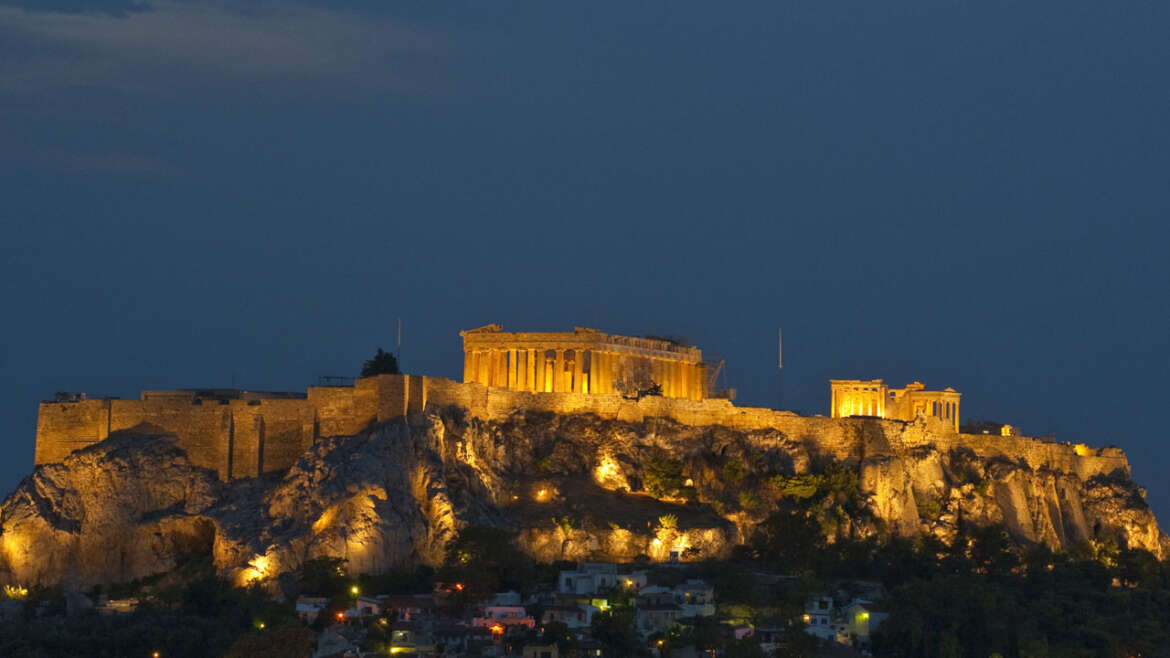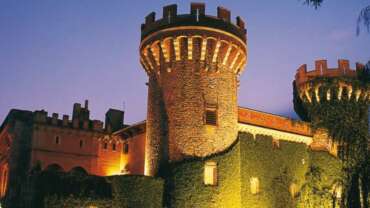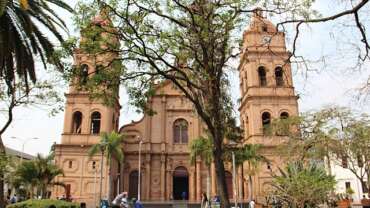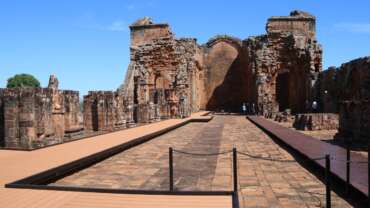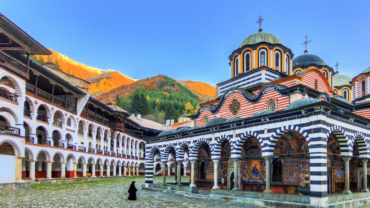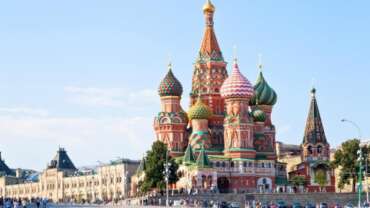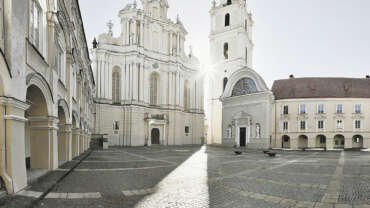Greece - You in Greece!
Greece is a country in southeastern Europe with thousands of islands throughout the Aegean and Ionian seas. Influential in ancient times, it’s often called the cradle of Western civilization. Athens, its capital, retains landmarks including the 5th-century B.C. Acropolis citadel with the Parthenon temple. Greece is also known for its beaches, from the black sands of Santorini to the party resorts of Mykonos.
History of Greece
Today’s visitors to Greece have the opportunity to trace the “fingerprints” of Greek history from the Paleolithic Era to the Roman Period in the hundreds of archaeological sites, as well as in the archaeological museums and collections that are scattered throughout the country.
The first traces of human habitation in Greece appeared during the Paleolithic Age (approx. 120000 – 10000 B.C.). During the Neolithic Age that followed (approx. 7000 – 3000 B.C.), a plethora of Neolithic buildings spread throughout the country. Buildings and cemeteries have been discovered in Thessaly (Sesklo, Dimini), Macedonia, the Peloponnese, etc.
The beginning of the Bronze Age (approx. 3000-1100 B.C.) is marked by the appearance of the first urban centers in the Aegean region (Poliochni on Limnos). Flourishing settlements were found on Crete, Mainland Greece, the Cyclades and the Northeastern Aegean, regions where characteristic cultural patterns developed.
At the beginning of the 2nd Millennium B.C., organized palatial societies appeared on Minoan Crete, resulting in the development of the first systematic scripts. The Minoans, with Knossos Palace as their epicenter, developed a communications network with races from the Eastern Mediterranean region, adopted certain elements and in turn decisively influenced cultures on the Greek mainland and the islands of the Aegean.
On Mainland Greece, the Mycenean Greeks –taking advantage of the destruction caused on Crete by the volcanic eruption on Santorini (around 1500 B.C.)- became the dominant force in the Aegean during the last centuries of the 2nd Millennium B.C.. The Mycenean acropolises (citadels) in Mycenae, Tiryns, Pylos, Thiva, Glas, Athens and Iolcus, then comprised the centers of the bureaucratically organized kingdoms.
The extensive destruction of the Mycenean centers around 1200 B.C. led to the decline of the Mycenean civilization and caused the population to migrate to the coastal regions of Asia Minor and Cyprus (1st Greek colonization).
After approximately two centuries of economic and cultural inactivity, which also became known as the Dark Years (1150 – 900 B.C.), the Geometric Period then followed (9th – 8th Century B.C.). This was the beginning of the Greek Renaissance Years. This period was marked by the formation of the Greek City-States, the creation of the Greek alphabet and the composition of the Homeric epics (end of the 8th Century B.C.).
The Archaic Years that subsequently followed (7th – 6th Century B.C.) were a period of major social and political changes. The Greek City-States established colonies as far as Spain to the west, the Black Sea to the north and N. Africa to the south (2nd Greek colonization) and laid the foundations for the acme during the Classical Period.
The Classical Years (5th – 4th Century B.C.) were characterized by the cultural and political dominance of Athens, so much so that the second half of the 5th Century B.C. was subsequently called the “Golden Age” of Pericles. With the end of the Peloponnesian War in 404 B.C., Athens lost its leading role.
New forces emerged during the 4th Century B.C. The Macedonians, with Philip II and his son Alexander the Great, began to play a leading role in Greece. Alexander’s campaign to the East and the conquest of all the regions as far as the Indus River radically changed the situation in the world, as it was at that time.
After the death of Alexander, the vast empire he had created was then divided among his generals, leading to the creation of the kingdoms that would prevail during the Hellenistic Period (3rd – 1st Century B.C.). In this period the Greek City-States remained more or less autonomous, but lost much of their old power and prestige. The appearance of the Romans on the scene and the final conquest of Greece in 146 B.C. forced the country to join the vast Roman Empire.
During the Roman occupation period (1st Century B.C. – 3rd Century A.D.), most of the Roman emperors, who admired Greek culture, acted as benefactors to the Greek cities, and especially Athens.
Christianity, the new religion that would depose Dodekatheon worshipping, then spread all over Greece through the travels of Apostle Paul during the 1st Century A.D. The decision by Constantine the Great to move the capital of the empire from Rome to Constantinople (324 A.D.), shifted the focus of attention to the eastern part of the empire. This shift marked the beginning of the Byzantine Years, during which Greece became part of the Byzantine Empire.
After 1204, when Constantinople was taken by Western crusaders, parts of Greece was apportioned out to western leaders, while the Venetians occupied strategic positions in the Aegean (islands or coastal cities), in order to control the trade routes. The reoccupation of Constantinople by the Byzantines in 1262 marked the last stages of the empire’s existence.
The Ottomans gradually began to seize parts of the empire from the 14th Century A.D., and completed the breakup of the empire with the capture of Constantinople in 1453. Crete was the final area of Greece that was occupied by the Ottomans in 1669.
Around four centuries of Ottoman domination then followed, up to the beginning of the Greek War of Independence in 1821. Numerous monuments from the Byzantine Years and the Ottoman Occupation Period have been preserved, such as Byzantine and Post-Byzantine churches and monasteries, Ottoman buildings, charming Byzantine and Frankish castles, various other monuments as well as traditional settlements, quite a few of which retain their Ottoman and partly Byzantine structure.
The result of the Greek War of Independence was the creation of an independent Greek Kingdom in 1830, but with limited sovereign land.
During the 19th C. and the beginning of the 20th C., new areas with compact Greek populations were gradually inducted into the Greek State. Greece’s sovereign land would reach its maximum after the end of Word War I in 1920, with the substantial contribution of then Prime Minister Eleftherios Venizelos. The Greek State took its current form after the end of World War II with the incorporation of the Dodecanese Islands.
In 1974, after the seven-year dictatorship period a referendum was held and the government changed from a Constitutional Monarchy to a Presidential Parliamentary Democracy, and in 1981 Greece became a member of the European Union.
People of Greece
Ethnic groups
The population of Greece, in particular that of northern Greece, has always been characterized by a great deal of ethnic, religious, and linguistic diversity. Migrations, invasions, imperial conquests, and 20th-century wars all contributed to this cultural diversity, which continues to characterize modern Greece—in spite of several instances of population exchanges, which occurred as a result of treaties between Greece and Bulgaria in 1919 and between Greece and Turkey in 1923, along with long-standing government policies of assimilation, or Hellenization.
According to the dominant ideology of the Greek state, all the people of Greece are, or should be, Greek. As a result, the existence of ethnic and national diversity in the country has remained a sensitive issue. The Greek government’s official position is that there are no ethnic or national minorities in the country and that virtually the entire population is Greek. The only minority officially recognized by the Greek government is a religious minority, the Muslim minority of Thráki (Thrace), whose existence was acknowledged in the 1923 Treaty of Lausanne. Nonetheless, the population of Greece includes people who identify themselves as Turks, Macedonians, Albanians, Aromanians (Vlachs), and Roma (Gypsies).
Greek is the language of the majority of Cyprus’s population, and enclaves of Greeks—as defined by the language they speak—are to be found to different degrees in southern Albania, southern Italy, Turkey, and Bulgaria. Greek expatriate communities play a distinctive role in Europe, North and South America, Australia, and South Africa.
Languages
The Greek language is one of the oldest attested Indo-European languages, its earliest written form (Linear B) dating to about the 15th century BCE. Koine (the language of the New Testament) and Byzantine Greek represent the middle phases of Greek. Those ultimately gave way in the 19th century to Modern Greek (except in the liturgy of the Greek Orthodox Church, which still uses Koine), although from roughly the 15th century onward, the language had a very modern aspect to it. Modern Greek comprises Standard Modern Greek and the various regional dialects.
Standard Modern Greek is the official state language, and it is an amalgamation of two historical forms: Demotic, which is widely spoken, and Katharevusa, a deliberately archaizing form that was primarily written, appearing in official government documents and newspapers until the mid-1970s. Separate transliteration tables are generally used for Classical and Modern Greek; however, changes in the pronunciation of the Greek language and conflicting transliteration conventions have resulted in widespread discrepancies, even in the rendering of Modern Greek names in Roman orthography. Although not officially recognized, minority languages spoken in the country include Turkish, Macedonian, Albanian (especially in the dialect known as Arvanítika, a variety of Tosk Albanian taken to Greece in the 15th century by settlers from what is now Albania), Bulgarian, Romany, Aromanian (a form of Eastern Romance, akin to Daco-Romanian, spoken by the Aromanians and also called Macedo-Romanian), and Megleno-Romanian (another form of Eastern Romance, spoken in a few villages in the north).
The form of Greek known as Tsakonian is different enough from other varieties that it could be considered a separate language too, and a similar claim could be made for the Pontic variety and the Cappadocian variety as spoken now in Greece (these last two occurring in Greece as a result of the population movements mandated by the Treaty of Lausanne).
Religion
Despite the long Ottoman administration, virtually all of the population belongs to the Church of Greece (Greek Orthodox Church). An autocephalous (ecclesiastically independent) Eastern Orthodox church, this body appoints its own ecclesiastical hierarchy and is headed by a synod of 12 metropolitans under the presidency of the archbishop of Athens. Almost all Cretans belong to a special branch of the Church of Greece headed by the archbishop of Crete, who is directly responsible to the Ecumenical Patriarchate of Constantinople, as are the monks of Mount Athos, who constitute a semiautonomous entity with a Greek governor but with their own administration.
Civilization of Greece
Culture & Arts
Civilisation is the total sum of the material and cultural achievements of a group of people. Culture and art are two concepts closely interwoven, as art is the characteristic expression of the culture of a given period. Arts such as architecture, sculpture, pottery, weaving, music, jewelry making and painting have a long-term tradition in Greece, where civilisations had already developed in Prehistoric Years.
Little is known to date to the Paleolithic Era in Greece, but quite a lot is known about the Neolithic Period that followed (approx. 7th – 4th Millennium B.C.) and its civilisation, which is traced mainly in areas that included Thessaly and Macedonia. Civilisations with impressive achievements developed during the Bronze Age (approx. 3000 – 1150 B.C.) in the Northeastern Aegean, the Cyclades (its trademark being the large-sized marble figurines), Crete and the Greek Mainland. The civilisations that flourished during the 2nd Millennium in the two regions, known as the Minoan and the Mycenean Periods respectively, are considered to be the first of the great civilisations in Greece.
Architectural remains (e.g. palaces), as well as pottery work, stone carving (vessels, sealstones), metallurgy (vessels, weapons), jewelry making and paintings (murals) were impressive and representative works of these civilisations.
During the historical years, the civilisations of the Geometric Period (9th – 8th Century B.C.) and the Archaic Period (7th – 6th Century B.C.) were considered to be the forerunners of the culture found in the Classical Period (5th – 4th Century B.C.). The Classical works of art, with their ideal proportions and beauty, expressed the philosophical ideals of their times, and were the model of the European Renaissance Era of the 15th Century A.D. Greek civilisation developed during the subsequent Hellenistic Years (3rd – 1st Century B.C.) and the Roman Years (1st Century B.C. – 3rd Century A.D.), within the framework of large kingdoms and an empire respectively.
Greek civilisation again flourished -within the framework of an empire- during the Byzantine Years (early, middle and late – 4th – 15th Century A.D.), while civilisation in more recent times was marked by the Ottoman occupation and the emergence of the new Hellenic State after the Greek War of Independence (1821-1830).
A visit to archaeological sites, museums and monuments throughout the country provides a vivid picture of the civilisations in Greece and their accomplishments in arts and technology from the Prehistoric Era to modern times.
The traditional heritage of a country is the sum of the cultural and material achievements bequeathed by previous generations.Folk culture for the Greek people, rich in music, dances, poetry and theatre, is part of their every day life. All over the country have been created many specialized museums and cultural organisations aiming to preserve and study the Greek traditional heritage.
Greek islands
The islands are the main characteristic of Greece’s morphology and an integral part of the country’s culture and tradition. Greek sovereign land includes 6,000 islands and islets scattered in the Aegean and Ionian Seas, of which only 227 islands are inhabited. This is a truly unique phenomenon for the European continent.
The Greek Archipelago takes up 7,500 km of the country’s total 16,000 km coastline, offering a highly diversified landscape: beaches stretching over many kilometers, sheltered bays and coves, sandy beaches with sand-dunes, pebble beaches, coastal caves with steep rocks and dark colored sand typical of volcanic soil and coastal wetlands.
Many of these Greek beaches have been awarded the blue flag under the Blue Flags of Europe Program, providing not only swimming, but also scuba diving, snorkeling, water skiing, sailing and windsurfing.
Some of the oldest European civilizations developed on the Greek islands (Cycladic, Minoan civilizations, etc.), so therefore the islands have unique archeological sites, a distinctive architectural heritage and the fascinating local traditions of a centuries-old and multifaceted civilization.
The ideal climate, safe waters and small distances between ports and coasts, have made the Greek islands extremely popular among Greek and foreign visitors.



